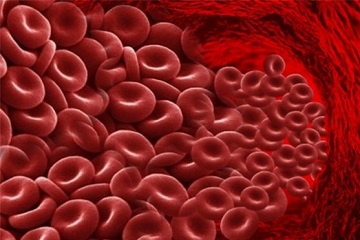A Group of IPB Researchers Studied the Efficacy of Daily and Weekly Iron Supplementation on Hemoglobin Levels in Young Women

Nutritional anemia refers to the low concentration of hemoglobin due to poor diet. According to the World Health Organization, a hemoglobin concentration below 7.5 mmol/L and 8. mmol/L for women and men, respectively, is considered to be anemic. Iron deficiency anemia develops when body stores of iron drop too low to support normal red blood cell (RBC) production. Inadequate dietary iron, impaired iron absorption, bleeding, or loss of body iron in the urine may be the cause. Iron deficiency anemia (AGB) is the most common micro-nutritional problem in the world, afflicted by more than two billion people or 30 percent of the world's population. Adolescents are at risk of developing anemia because it is the second rapid growth period after the baby, as well as the occurrence of menstruation. The prevalence of nutritional anemia in adolescent age group (15-24 years) nationally is 18,4 percent according to Ministry of Health (Kemenkes) 2013. Patients with iron deficiency anemia may report the following: fatigue and diminished capability to perform hard labour; leg cramps on climbing stairs; reduced resistance to infection; and poor scholastic performance
Three researchers from the Department of Community Nutrition, of the Faculty of Human Ecology of Bogor Agricultural University (FEMA IPB), namely Yeti Susanti, Dodik Briawan and Drajat Martianto conducted carried out research program to investigate the impact of weekly supplementation and combination weekly and daily of iron supplementation in the hemoglobin in female adolescents.
"This quasi-experimental study aims to examine in the efficacy of three ways of iron supplementation on hemoglobin levels in female adolescents," said Dodik.
Three intervention groups received iron supplements (60 mg of elemental iron and 0.25 mg of folic acid) for 14 weeks in Tasikmalaya District in March-June 2015. The groups each received weekly (M) weekly and daily iron supplements for 10 days of menstruation (M + Mens), and weekly with nutritional education (M + PG).
The researchers revealed that the incrased hemoglobin levels did not significantly differ in all treatment groups. The investigators revealed that iron supplementation reduced the prevalence of anemia by 15.8 percent (M), 18.0 percent (M + Mens), and 4.9 percent (M + PG), respectively. Weekly iron supplementation has the same effectiveness as weekly and during menstruation in increasing hemoglobin levels in female adolescents.
"The average adherence to supplement consumption was very low in the M + Mens group versus the M and M + PG groups. Increased hemoglobin levels did not differ significantly among the three treatment groups. Intermittent iron supplementation (M and M + PG) has the same effectiveness as the combination of weekly and during menstruation (M + Mens) applied by the Ministry of Health currently to increase hemoglobin levels, "Dodik said.
These researchers suggested that iron supplementation in adolescents should be given intermittently (weekly). "The results of this study has indicated the present study has shown the effectiveness of the weekly supplementation of iron in adolescents done intermittently performed better (M and M + PG) with additional benefits of high adherence supplement consumption," he said. (Wied)



